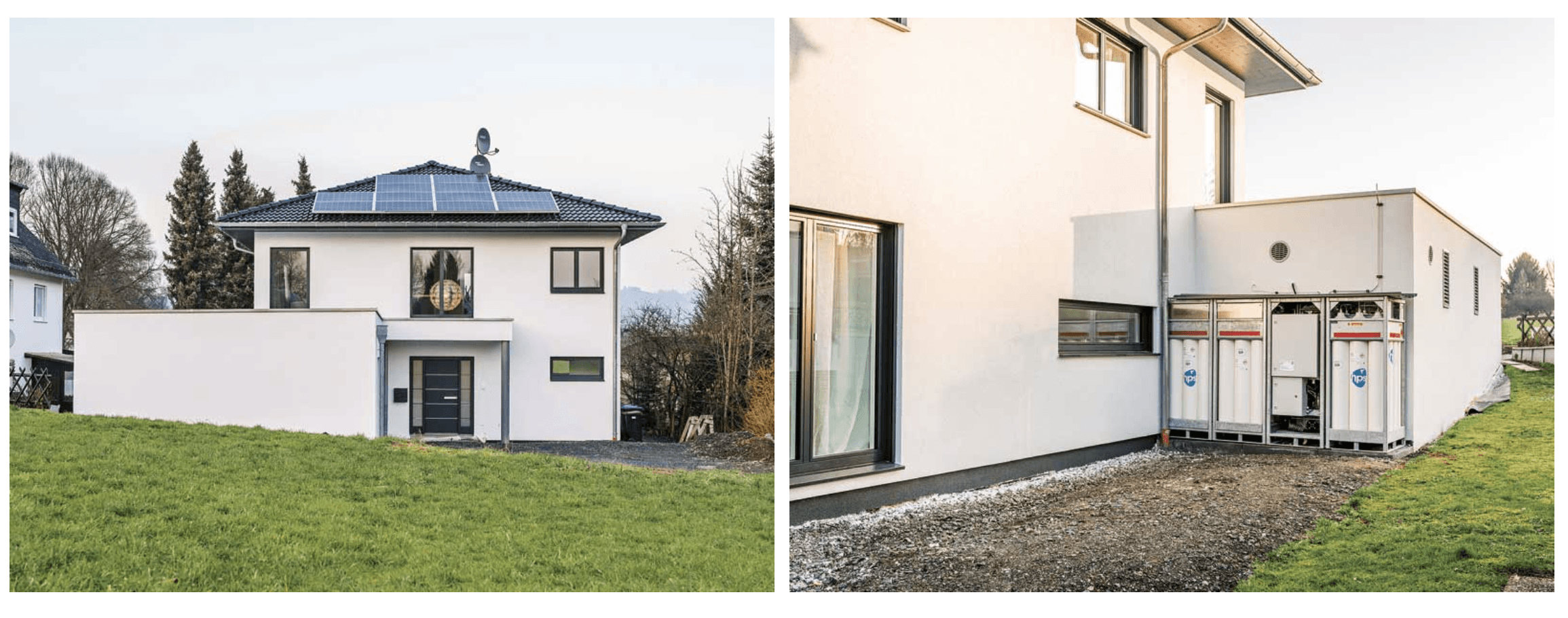Do you want your home to be completely energy independent and need no electricity or gas? This is now becoming a reality with the use of fuel cells.
Berlin-based company «HPS Home Power Solutions» over a year has been testing several pilot projects with fully autonomous buildings.The first such house is the WeberHaus City Villa in the Karadeniz family in Sauerland / Germany. The 153-square-meter home is equipped with a Picea / HPS combination plant, photoelectric system and hydrogen storage facility.

100% of the green electricity completely produced by panels on the roof of the building and stored in the house, all thanks to one compact device. The Picea plant combines a complete technological cycle - a home battery, fuel cells, an electrolytic cell (which converts water into hydrogen), as well as recovery ventilation and an intelligent control system.
How the autonomous system Home Power Solutions works?
During the day, Picea can convert photovoltaic electricity that is not used or temporarily stored in rechargeable batteries into hydrogen, which is then stored in special storage, based on high pressure cylinders. Depending on the size of the drive, an average of 1000 kilowatt hours of energy is stored. In winter, when there is not enough solar generation, hydrogen is fed to the fuel cells to generate electricity and heat again.

The HPS unit combines batteries, a cell, fuel cells and a ventilation unit. Thus, the system owners receive in one device - heating, hot water, electricity and ventilation.
Work in the summer
On sunny summer days, the photovoltaic plant generates electricity, which is distributed as follows:
- current consumption- accumulation in rechargeable batteries for night use
- excess electricity is fed to the cell, which splits the water and produces hydrogen, which is stored for seasonal balloon storage near the house. The electrolysis process is accompanied by the release of heat that enters the storage tank and can be used for hot water or heating.

Work in winter
Because there is not enough solar energy in the winter, seasonal storage is used to continue providing the house with electricity and heat. The accumulated hydrogen is fed to the fuel cells, where the electrochemical process of electricity production takes place, which is also accompanied by the release of a significant amount of heat, which is fed into the buffer tank and further used for heating and hot water supply.
How does the fuel cell work?
The fuel cell is an electrochemical device in which the process of combining hydrogen fuel and oxygen with the release of electricity, heat and water. Due to the lack of combustion, the fuel cells do not produce harmful emissions, and the product of this process is pure water only. Unlike traditional electrical accumulators, where similar transformations occur, fuel cells have two important features:
- they function as long as the fuel (the reducing agent) and the oxidant come from an external source
- the chemical composition of the electrolyte does not change during operation, thats why the fuel cell does not need to be rechargedи

The device consists of two electrodes separated by an electrolyte. Hydrogen is fed to the anode (negative electrode) and oxygen to the cathode (positive electrode). The anode, due to the catalyst, decomposes hydrogen molecules and electron formation. Then the electrons move to the positive electrode, which is blown by oxygen and at which ions arise. Ionized oxygen migrates through the electrolyte in the direction of the anode, where it connects with hydrogen to form water.
